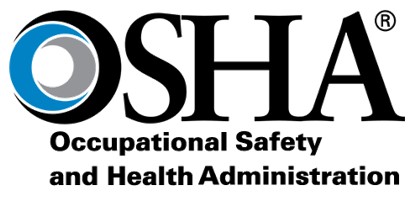OSHA Releases New National Emphasis Program on Fall Hazards
Originally Published by: Ogletree Deakins — May 5, 2023
SBCA appreciates your input; please email us if you have any comments or corrections to this article.
According to the National Safety Council, in 2020, 136 workers died and 127,680 were injured in “same level falls.” According to Bureau of Labor Statistics (BLS) data, “of the 5,190 fatal workplace injuries in 2021, 680 were associated with falls from elevations, about 13 percent of all deaths.” Because falls in construction are such a significant workplace health and safety issue, the first week in May for the past ten years has been designated by the Occupational Safety and Health Administration (OSHA) as the National Safety Stand-Down to Prevent Falls in Construction.

Quick Hits
- OSHA’s tenth annual National Safety Stand-Down to Prevent Falls in Construction concluded on May 5, 2023.
- Bureau of Labor Statistics data shows that fatalities caused by falls is a leading cause of death for all workers.
- Ogletree Deakins’ OSHA Tracker reveals that fall protection in residential construction leads OSHA inspections, citations, and penalties from 2017 through the present.
On May 1, 2023, OSHA announced a new national emphasis program (NEP) that focuses enforcement efforts on fall-related hazards. The announcement strategically coincided with the start of the tenth annual National Safety Stand-Down to Prevent Falls in Construction, which concluded on May 5, 2023. The NEP took effect immediately, and has no apparent expiration date.
The release of the NEP, based on BLS data and OSHA enforcement history, likely did not surprise employers, particularly those in the construction industry. BLS data shows that “fatalities caused by falls continue to be a leading cause of death for all workers.” 29 C.F.R § 1926.501 (Fall Protection – General Requirements) maintained its position as OSHA’s most frequently cited standard in fiscal year 2022, with 5,980 cited violations, marking its twelfth consecutive year atop the agency’s “Top 10” list. That is more than double the next most frequently cited standard, which totaled 2,424 cited violations, or less than half the total for Fall Protection – General Requirements.
OSHA plans to use the NEP, which provides for a combination of enforcement—hazard-based inspection targeting and locally generated programmed targeting in construction—to “significantly reduce or eliminate unprotected worker exposures to fall-related hazards … that can result in serious injuries and deaths.”
Who is subject to the NEP? Potentially, all employers. The NEP applies to all industries and authorizes compliance officers to initiate inspections whenever they observe someone working at heights. Surprisingly, the NEP does not limit compliance officers’ authority by specifying at what height someone must be working in order to initiate an inspection (e.g., above four feet).
All construction inspections related to falls will be conducted under the NEP. While OSHA anticipates that most inspections will occur in construction, the NEP also targets nonconstruction inspections involving the following general industry sectors:
- Roof top mechanical work/maintenance
- Utility line work/maintenance (electrical, cable)
- Arborist/tree trimming
- Holiday light installation
- Road sign maintenance/billboards
- Power washing buildings (not connected to painting)
- Gutter cleaning
- Chimney cleaning
- Window cleaning
- Communication towers
Interestingly, locally generated programmed targeting in construction under the NEP is optional. The NEP only encourages OSHA regional and area offices to “develop targeting methods that effectively reach industry sectors where fall protection is often lacking, such as residential construction and servicing activities.” Ultimately, the NEP gives regional and area offices considerable discretion in how much effort, if any, to devote to programmed enforcement.
According to OSHA’s annual enforcement reports, nearly 31 percent (77,782) of the total number of inspections OSHA conducted from 2014 through 2021 (247,798) were related to falls. And from 2017 through the present, the most common standard for which OSHA conducted inspections, has issued citations, and imposed penalties, has been fall protection in residential construction, according to Ogletree Deakins’ complimentary OSHA Tracker. By allowing compliance officers to open inspections any time they observe someone working at any height, employers can expect to see increased inspections related to falls in 2023.
Ogletree Deakins’ Workplace Safety and Health Practice Group will continue to monitor OSHA with respect to inspection and enforcement developments and will post updates on the Workplace Safety and Health blog as additional information becomes available. Important information for employers is also available via the firm’s webinar and podcast programs.
